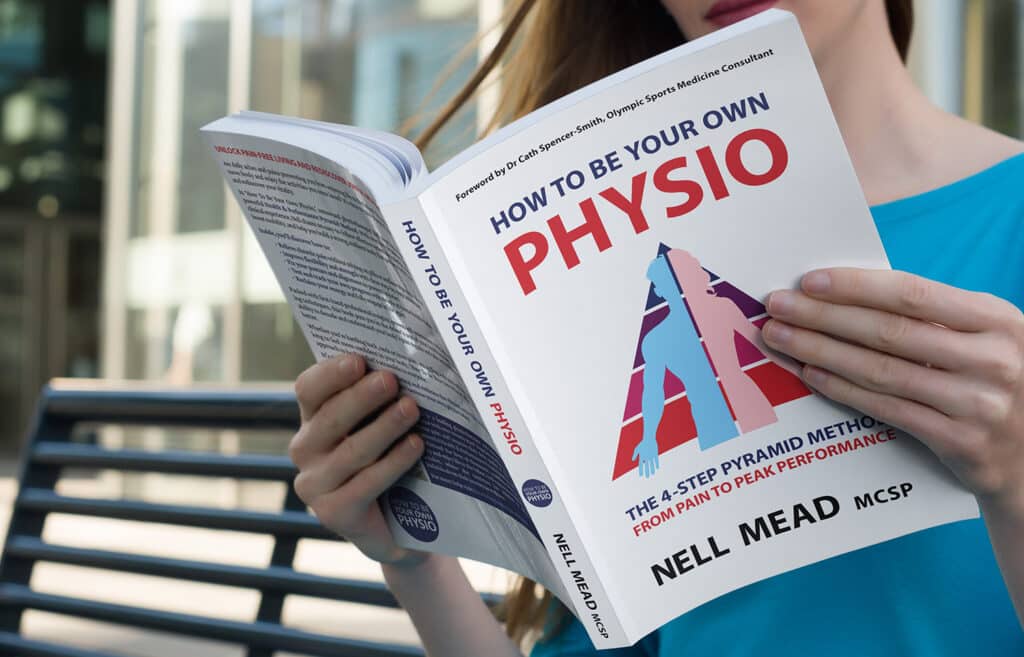I was limping for 6 months
“Will my ankle be weak for life?”
I faced exactly this question well over 20 years ago, as an undergraduate physiotherapy student. I’d twisted my left ankle slipping off a kerb, on the morning — yes, no alcohol involved — of my tennis club finals day. My fab mixed doubles partner Ian (who had tennis elbow) and I put mind over matter to beat the club champions in three sets that afternoon, and I assumed my sprained ankle would resolve.
But when I was still limping 6 months later (I promise I know better now!) I took myself off to see my mum’s osteopath.
I was lucky.
He told me I had subluxed (displaced) my tibia, manipulated it back into place (I was convinced he was trying to break my leg) – and almost immediately, my limp stopped. The only “issue” I now have is an ankle which occasionally fires off painless, if noisy, clicks.
However – a displaced tibia is relatively rare, and there are lots of other reasons for ankle sprains to hang around. Here are some of the main ones.
High ankle sprain
If you’re really unlucky, you’ll have disrupted the tibiofibular ligaments that hold your two shin bones together at the tibiofibular syndesmosis. This causes an excessive gap between the two bones, and can result in instability. If it’s caught early and isn’t too severe, it can be treated with a boot to immobilise the joint while the ligaments heal; but if you’re too late or the gap is too big, you may need surgery.
Local misuse and bad habits
When you first sprain an ankle, the surrounding muscles go into spasm to protect it. That’s normal, and initially desirable – after all, we don’t want to tear the ligaments again. However, after a few weeks of normal healing and (ideally) proper treatment and rehabilitation, the muscle spasm should calm down and allow the foot and ankle bones to move normally again. But sometimes – for example, if your healing is interrupted by another twist, or by rehab that’s too aggressive, the muscle spasm sets in, resulting in joint stiffness and dodgy walking gait – which in turn perpetuates the sore, swollen ankle.
Inadequate rehab of the local (ankle) area
When the muscles around the ankle come out of spasm, if it’s been there a while then you may have lost both muscle strength and proprioception (your joints’ ability to tell your brain where the bones are, so that if you overbalance, you can switch the correct muscles on at the right time, to avoid falling over and causing more damage). Both strength and proprioception can and should be retrained.
Structural damage
Just because your X-ray didn’t show a fracture, it doesn’t mean you couldn’t have completely torn a ligament. Ligament ruptures can go undiagnosed, and risk causing permanent instability.
Global misuse and bad habits
The ankle isn’t the only bit that matters! Once you start limping, you’ll affect not only your ankle, but potentially any or all joints north, because you’ll be loading them differently. Your other joints – commonly the pelvis and low back – may then start to compensate for the sore ankle, and may become sore themselves. In the ideal world, once the ankle heals, the compensation patterns will go away; but unfortunately our bodies don’t guarantee that. A poorly-functioning pelvis or back may make you move poorly over your recently-healed ankle, putting you at risk of more pain and reinjury.
The bad news is that any or all of these issues put you at risk of permanent, degenerative change if you do nothing about them.
The good news is that virtually every sore ankle is fixable – or at least improvable – with proper assessment and treatment. A good physio will look at the specific movements your ankle can and can’t produce, and they’ll analyse your balance and your loading patterns during functional movements. An even better physio will also assess your whole body for possible compensation patterns, to work out whether any of the above reasons (or something else!) is yours.
If you can manage with conservative treatment, your physio should ensure your bones are able to move as well as possible, that your muscles are out of spasm, that your proprioception, balance, control through range, strength and endurance are retrained – throughout your body, not just at your ankle; and through a range of increasingly challenging functional tasks.
And if you need further investigation or even invasive treatment such as injections or surgery, they should be able to recommend a good surgeon to help.
Does your sprained ankle still hurt after 6 months? 3 months? A month?
Don’t struggle with an old ankle sprain! Even if your ankle hurts years after a sprain, get it checked out and take the first step to getting it right again. And if you see me, I’ll be looking at your whole body to check for compensation patterns, and will use outside-the-box techniques to help you get better faster. Why not call my team on 0207 175 0150 and get a really thorough, 90-minute assessment of your case?







